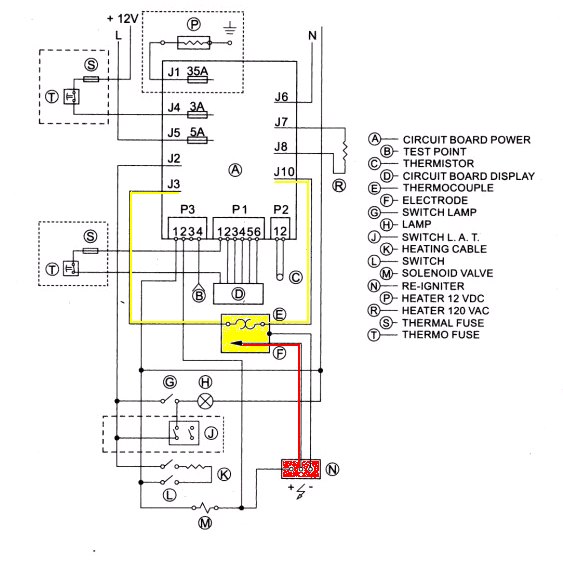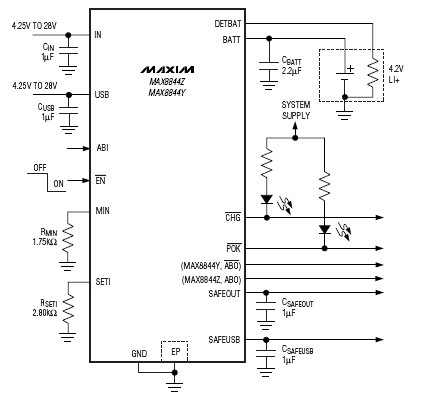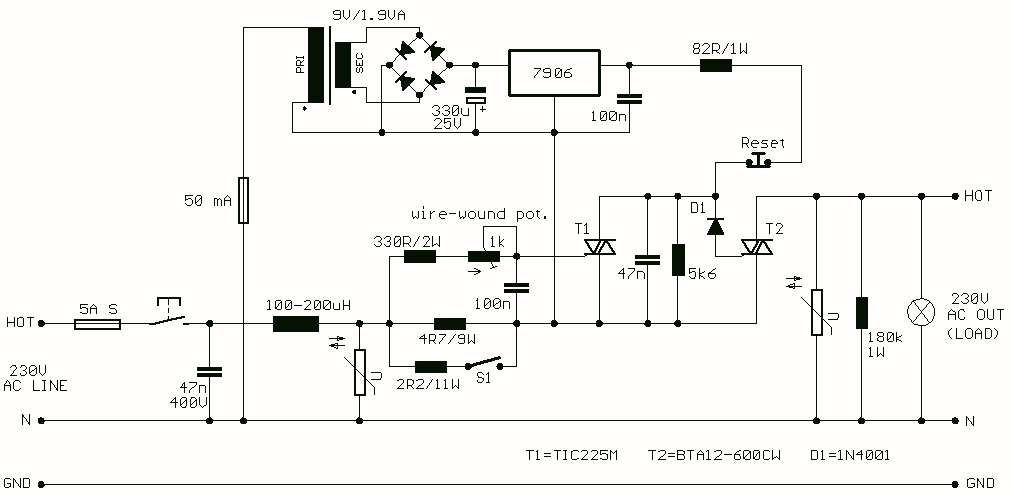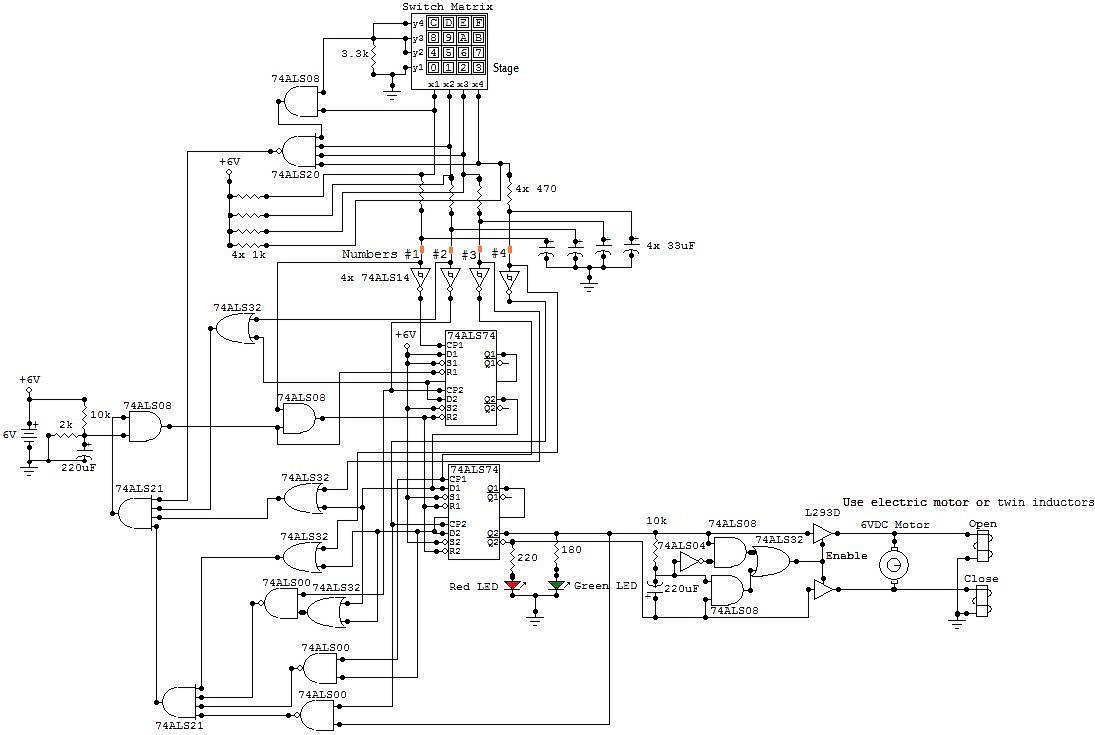
Electronic Police Siren
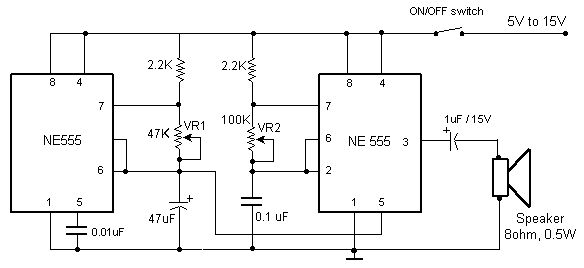
This circuit produces a sound similar to the police siren. It makes use of two 555 timer ICs used as astable multivibrators. The frequency is controlled by the pin 5 of the IC. The first IC (left) is wired to work around 1Hz. The 47uF capacitor is charged and discharged periodically and the voltage across it gradually increases and decreases periodically. This varying voltage modulates the frequency of the 2nd IC. This process repeats and what you hear is the sound remarkably similar to the police siren. More: Two presets VR1 and VR2 are provided to vary the siren period of repetition and the tone of the siren. By varying VR1 you can set how fast the siren changes from high freq. to low freq. VR2 sets the siren frequency. Adjust VR1 and VR2 to suit your taste.
The described circuit utilizes two 555 timer integrated circuits (ICs) configured as astable multivibrators to generate a sound mimicking a police siren. The first 555 timer operates at a frequency close to 1 Hz, determined by the timing components connected to it, specifically a 47 µF capacitor. This capacitor is charged and discharged in a cyclical manner, leading to a fluctuating voltage that varies over time. The periodic changes in voltage output from the first timer serve as a control signal for the second 555 timer, which is also configured as an astable multivibrator.
The modulation of the second timer's frequency occurs due to the variable voltage input from the first timer, creating a sound wave that rises and falls in pitch, thus emulating the characteristic sound of a police siren. The design incorporates two variable resistors, VR1 and VR2, which allow for fine-tuning of the circuit's performance. VR1 adjusts the rate at which the siren's pitch transitions from high frequency to low frequency, effectively controlling the siren's period of repetition. Meanwhile, VR2 directly influences the base frequency of the siren sound, providing further customization to suit user preferences.
In summary, this circuit effectively combines the functionality of two 555 timer ICs to achieve a dynamic sound output reminiscent of a police siren, with adjustable parameters for both frequency modulation and repetition rate, allowing for a tailored auditory experience. The implementation of variable resistors enhances user interaction, enabling modifications to the siren's characteristics based on individual taste.This circuit produces a sound similar to the police siren. It makes use of two 555 timer ICs used as astable multivibrators. The frequency is controlled by the pin 5 of the IC. The first IC (left) is wired to work around 1Hz. The 47uF capacitor is charged and discharged periodically and the voltage across it gradually increases and decreases periodically. This varying voltage modulates the frequency of the 2nd IC. This process repeats and what you hear is the sound remarkably similar to the police siren. Two presets VR1 and VR2 are provided to vary the siren period of repetition and the tone of the siren. By varying VR1 you can set how fast the siren changes from high freq. to low freq. VR2 sets the siren frequency. Adjust VR1 and VR2 to suit your taste. 🔗 External reference
The described circuit utilizes two 555 timer integrated circuits (ICs) configured as astable multivibrators to generate a sound mimicking a police siren. The first 555 timer operates at a frequency close to 1 Hz, determined by the timing components connected to it, specifically a 47 µF capacitor. This capacitor is charged and discharged in a cyclical manner, leading to a fluctuating voltage that varies over time. The periodic changes in voltage output from the first timer serve as a control signal for the second 555 timer, which is also configured as an astable multivibrator.
The modulation of the second timer's frequency occurs due to the variable voltage input from the first timer, creating a sound wave that rises and falls in pitch, thus emulating the characteristic sound of a police siren. The design incorporates two variable resistors, VR1 and VR2, which allow for fine-tuning of the circuit's performance. VR1 adjusts the rate at which the siren's pitch transitions from high frequency to low frequency, effectively controlling the siren's period of repetition. Meanwhile, VR2 directly influences the base frequency of the siren sound, providing further customization to suit user preferences.
In summary, this circuit effectively combines the functionality of two 555 timer ICs to achieve a dynamic sound output reminiscent of a police siren, with adjustable parameters for both frequency modulation and repetition rate, allowing for a tailored auditory experience. The implementation of variable resistors enhances user interaction, enabling modifications to the siren's characteristics based on individual taste.This circuit produces a sound similar to the police siren. It makes use of two 555 timer ICs used as astable multivibrators. The frequency is controlled by the pin 5 of the IC. The first IC (left) is wired to work around 1Hz. The 47uF capacitor is charged and discharged periodically and the voltage across it gradually increases and decreases periodically. This varying voltage modulates the frequency of the 2nd IC. This process repeats and what you hear is the sound remarkably similar to the police siren. Two presets VR1 and VR2 are provided to vary the siren period of repetition and the tone of the siren. By varying VR1 you can set how fast the siren changes from high freq. to low freq. VR2 sets the siren frequency. Adjust VR1 and VR2 to suit your taste. 🔗 External reference
